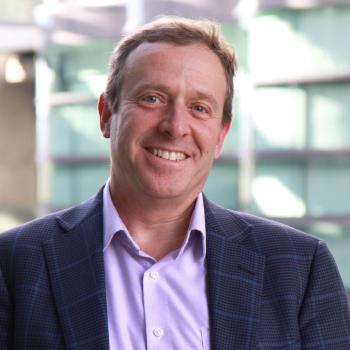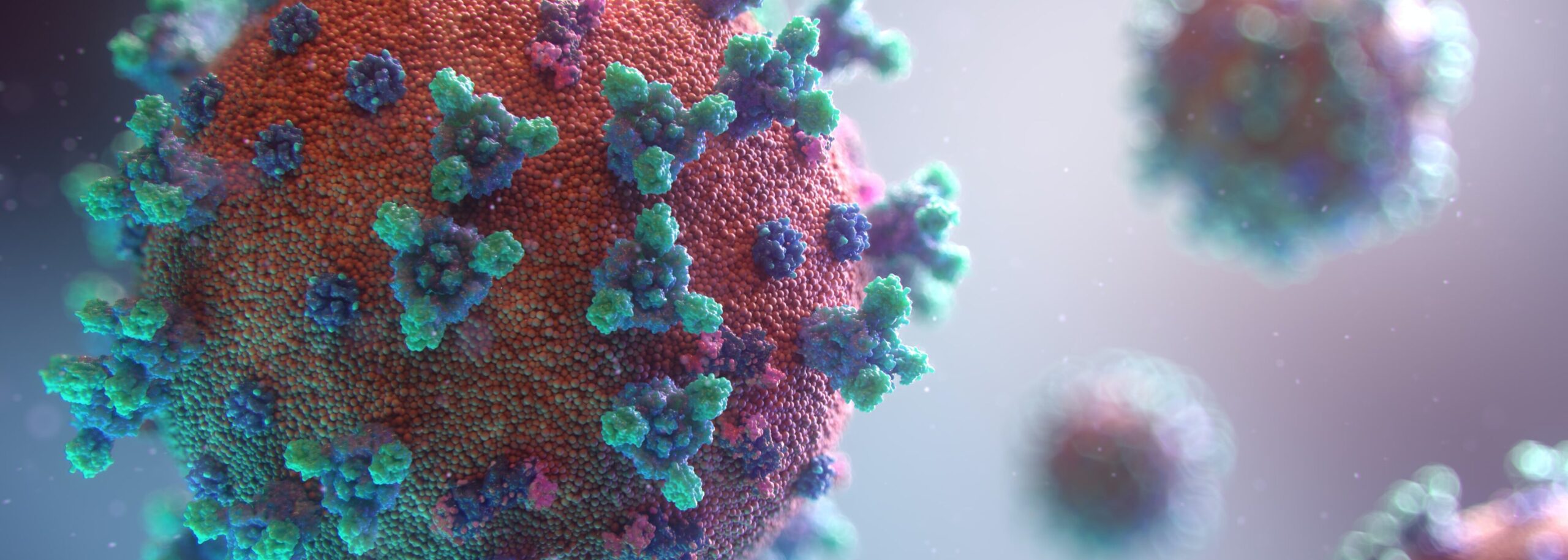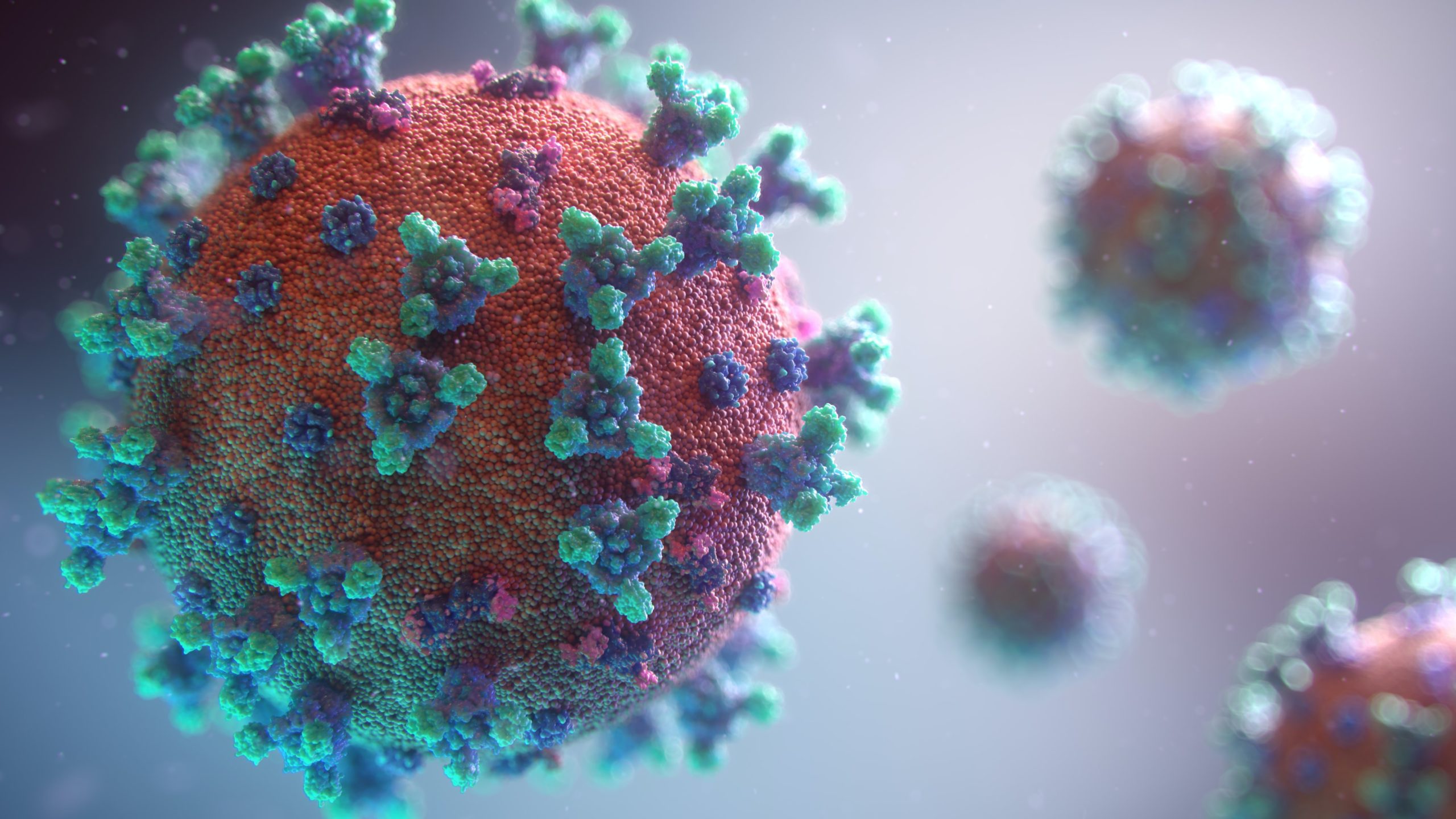Published: 07/25/2022
Jeffrey Glenn is leveraging unprecedented interest and funding for antiviral drug development to de-fang COVID-19 while preparing the world for future threats.

Jeffrey Glenn, MD, PhD, professor of medicine and of microbiology and immunology, is on a mission to de-fang COVID-19 and prepare the world for future viral threats.
To see this through, Glenn has assembled a team of more than 100 Stanford faculty, external consultants, postdoctoral researchers, students and other staff to develop drugs to combat viruses that pose a high pandemic risk. Their first priority: COVID-19.
The effort, dubbed SyneRx, is made possible by a $69 million grant Glenn received from the National Institutes of Health to establish an antiviral drug discovery center at Stanford. Those funds are a game-changer, according to Glenn. They will support significant progress developing drugs that can target current and future pandemic threats.
“This is a unique opportunity and a huge commitment from the government, and my goal is to make sure we deliver,” he said.
We spoke with Glenn, a new Global Health Faculty fellow at the Stanford Center for Innovation in Global Health, about his goals for SyneRX, the pivotal role antivirals play in pandemic preparedness, and the need for global collaboration.
What’s unique about this moment?
Right now, the world gets it. We need to act while there’s this window. If we’d done that more proactively years ago, we could have shut down COVID-19 in its tracks.
This opportunity differs from a regular grant where the goal is just to have a cool paper. Here, the goal is really to end up with something that can actually make its way into clinics. So we will define success by molecules getting Investigational New Drug (IND) approval by the Food and Drug Administration.
I think we’re well positioned to do that. We have an amazing group of people with very compelling science and projects. The foundation of this work is here at Stanford, but we have collaborators around the country and the world.
You describe your lab as a “cauldron of innovation.” What’s the recipe for assembling an innovative team while also making sure the discoveries end up being useful in the real world?
Most people in my lab are not MDs, but everybody’s there because they want to have an impact. We have people with backgrounds in insect biology, structural biology, chemical engineering, bioengineering — and of course — chemists and virologists. It’s really an “infectious” group, having all those people together and synergizing physically in the same place.
Of course we like to do cool science, but we also like to take things to the next level. In academia, when we have a hit in an assay, we often think we have a drug. But in reality, this is only putting your toe in the swimming pool, while developing a drug is winning the Olympics.
What does it look like to partner with people from other countries, including low- and middle-income countries, to ensure new drugs are meeting the needs of people around the world?
This is an all-hands-on-deck effort. Pandemics are global—so we have to be too. And our partners have to be, which is why we have assembled partners not only around the country but across the world. Everyone brings what they do best. Collectively, we can do amazing things.
This is an all-hands-on-deck effort. Pandemics are global—so we have to be too. And our partners have to be, which is why we have assembled partners not only around the country but across the world. Everyone brings what they do best. Collectively, we can do amazing things.
Jeffrey Glenn
In my work on hepatitis and liver cancer prior to the pandemic, I’ve worked closely with countries like Mongolia, Turkey, and Egypt for years. When the pandemic came, it made sense to branch out globally. I initiated and lead ViRx@Stanford, where the mission is to build out our collective antiviral toolkit proactively rather than reactively. Through this initiative, we’ve established global hubs. In Brazil, for instance, we’ve been involved in testing new drugs for COVID-19 including the TOGETHER trial, which is among the largest trials investigating repurposed therapies for COVID-19.
I’m also excited to partner with the Stanford Center for Innovation in Global Health because of its longstanding interest in health equity. While my main focus, of course, is developing the actual drugs, there are many other interesting, important aspects to be thinking about including equitable distribution.
What role do you see antivirals playing in this new phase of our current pandemic and future ones?
We need both vaccines and antivirals to the extent we can get them. Vaccines, if they’re available, play an important role. With COVID-19, we got very lucky. This is a very easy virus to make a vaccine against. There are other viruses like HIV and Hepatitis C, which even after decades of research, we still don’t have a vaccine for.
And so with the next pandemic, what’s it going to be? Is it going to be an easy one or a hard one?
And so with the next pandemic, what’s it going to be? Is it going to be an easy one or a hard one?
Jeffrey Glenn
With COVID-19, thanks to unprecedented support, we got vaccines from start to distribution within a year’s time. But imagine if we had a pandemic that was way more serious, where instead of most people surviving, most people were dead in three days. We couldn’t afford to wait even a year. We need to have something to immediately shut that pandemic down in its tracks.
So we need to assess – what are the biggest gaps in our armory? There are many, but we can focus on those viruses that are most likely to cause a highly transmissible and deadly pandemic. For these, we can try to develop antivirals and accelerate them to an advanced stage of development so they can be stockpiled and ready for distribution in time.
This is where your new work at SyneRx comes in.
Yes, this grant is specifically for outpatient treatments for COVID-19 and so-called direct-acting antivirals, which target the virus itself. Ideally, the molecules could also work against other RNA viruses of pandemic potential.
These “broad-spectrum compounds” designed to work against many viruses seem to be a particularly powerful tool for pandemic prevention.
Yes, I think so. For many reasons, I’m a big fan of “host-targeting antivirals” that target something in us that viruses depend on, rather than the virus itself. First, they present a higher barrier to antiviral resistance, since the drug is targeting something in us that’s not under the genetic control of the virus.
The second benefit is broad-spectrum potential. Often, if one virus has evolved to depend on one host function, other viruses have too. So the same drug could counter multiple different viruses — ones that we know about and ones that we don’t yet know about.
Finally, there’s often an opportunity for a non-viral clinical use. For instance, Hepatitis delta virus, the worst form of hepatitis, really plagues countries like Mongolia. Mongolia also has high rates of liver cancer, which is likely related. My Mongolian collaborators and I have been combating this devastating disease for many years and now have a drug in phase three trials that will, hopefully, soon be approved.
This drug could take a disease where there’s currently no hope and put it into the history books while also bringing down the cancer that comes with it. Even better, this drug was also recently approved for a completely unrelated, non-viral disease called progeria, which causes premature aging in children. This drug prolongs their life, which is amazing.
This kind of multi-use drug is important for pandemics because having a drug in an advanced state of readiness when an epidemic hits can cost a ton of money.
Jeffrey Glenn
This kind of multi-use drug is important for pandemics because having a drug in an advanced state of readiness when an epidemic hits can cost a ton of money. To invest all those resources against a virus that may never show up — that could be a hard ask. But if you have an antiviral that has also been developed for a non-viral clinical use, then it can be ready for use if, or when, the virus shows up.
Our current grant only funds direct-acting drug development. But if we’re lucky enough to get philanthropic support, then we can support some of the great host-targeting strategies that I know are being developed at Stanford by a variety of people.
Spending one’s career targeting deadly disease can’t be for the faint of heart. What gives you hope?
I’m a glass half-full, three-quarters-full kind of guy. So I have great hope. What’s nice now is that this hope is buttressed by data and facts. We couldn’t have been doing what we’re doing now, with this magnitude of support and numbers of people, before the pandemic. For many of us, this is what we trained for our whole life. It’s really an honor and privilege to engage in this type of work.
I see great potential in projects, candidate molecules, and drug development efforts now that there is generalized focus and commitment to those efforts. If we can sustain that, I think we can deliver in a proactive manner, at least for getting COVID behind us — but hopefully for the future.
Header photo from Fusion Medical, unsplash.com

